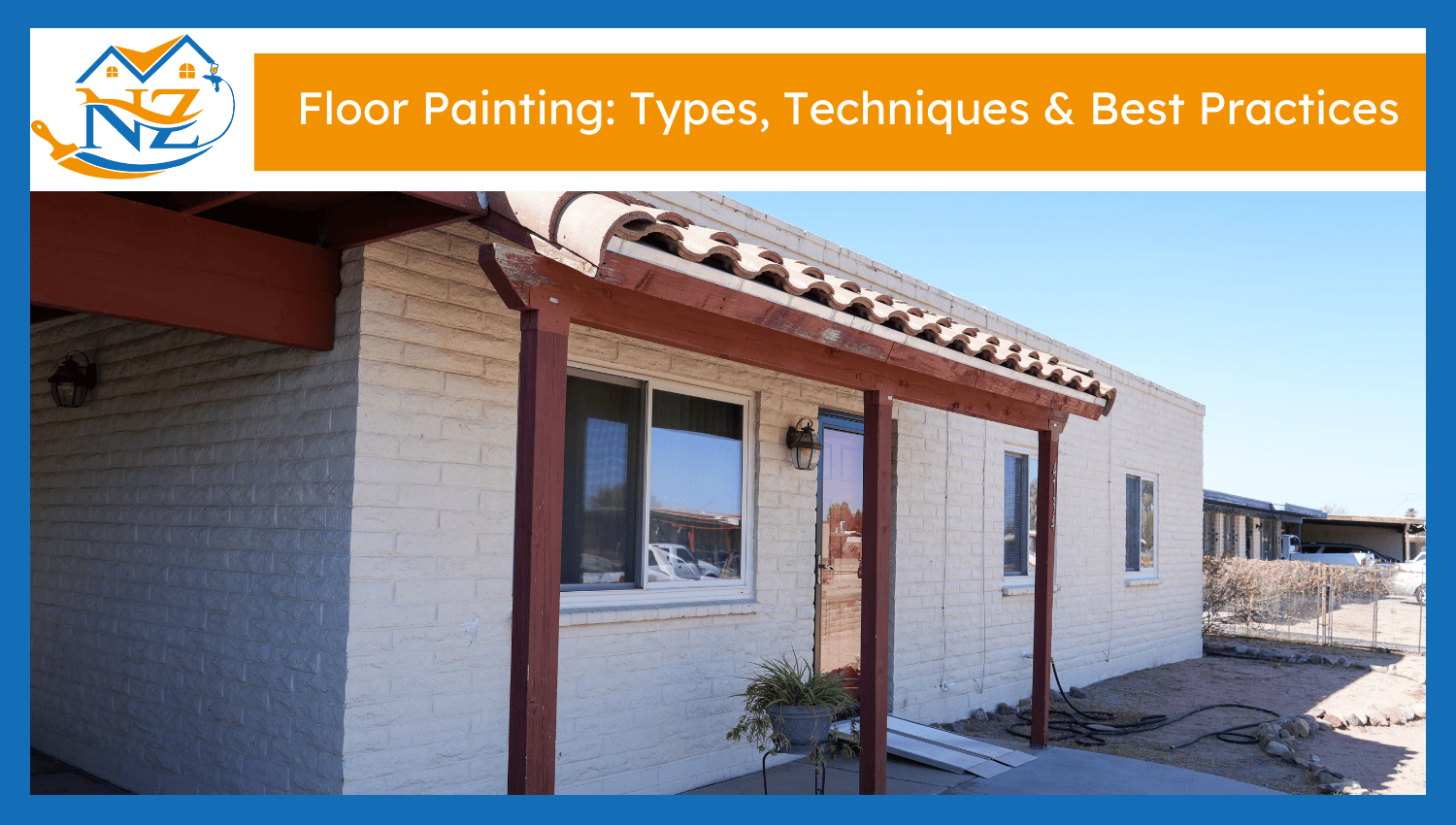

Floor painting enhances not only the appearance but also the durability of surfaces. It is resistant to wear, moisture, and stains. There are a number of types of paint that are suitable for a range of materials, such as concrete, wood, or tiles. Rolling, brushing, or spraying are common techniques for an even coverage. Correct surface preparation guarantees durability. It is necessary to clean, repair, and prime the floor before painting. The use of appropriate tools and products makes it easier. Slip-resistant finishes provide safety as well, specifically in high-traffic environments. Proper maintenance ensures painted floors are fresh. A good floor painting job helps in making a space that indeed helps in maintaining appearance and long-term practicality, both in commercial and residential spaces.
The following are the 4 main types of floor painting based on surface material:
Concrete floors require tough paint for resistance to moisture, foot traffic, and stains. Acrylic and Epoxy paints are commonly used. These paints stick well to rough surfaces and remain for a long time. The combination of cleaning and etching the surface enhances adhesion. Concrete floor painting is typically found in garages, basements, and workshops, because of the durability and the ease of maintaining.
Wooden floors demand the use of flexible paint so that the surface can stretch and loosen. Oil-based and latex paints are good for this. Smoothing the wood out by light sanding increases smoothness and also allows paint to grip on better. Wooden floor painting helps to retain natural beauty and protects the surface from scratches and spills. It is also good at creating creative design choices like borders or patterns.
Tile painting provides an update of the look without changing the surface. It is most effective when it is used with specialized tile paint and bonding primers. The glossy or glazed tiles require additional preparations. Painting tiles provides a smooth finish and conceals the grout lines. It does an update of the outdated styles while preventing them from the water and foot traffic. Perfect for bathrooms, kitchens, or for decor on the interior floors.
Epoxy coating offers a thick, glossy, and durable appearance. It is resistant to chemicals and impact as well as to water. This type is perfect for floors in industries and garages. The epoxy has a strong bond to the concrete and creates a protective seal. It also brings a shine and smoothness. Anti-slip additives improve safety. It is easy to clean and maintain epoxy floors.
Here are the 4 techniques that are followed in most floor painting projects:
Begin with a clean, dry, and free from dust floor. Clean away any stains, oil, or wax deposits. Fill out with a filler the cracks and holes. If required, sand the surface to provide a grip. This process ensures that the paint sticks appropriately. Lack of preparation results in peeling or uneven color at a later time. A properly prepared surface is helpful both in finish and durability.
Primer is used as a bonding middle layer between the floor and the top coat. It closes the surface and minimizes absorption. Select a primer according to the type of your floor, concrete, wood, or tile. Apply it evenly using a brush or a roller. Make sure it is completely dry before moving on to the next step. Primer provides enhanced coverage and increases the life of paint.
Use a roller to complete large spaces and a brush for corners and edges. Apply thin coats in one direction. Allow each coat to dry after applying it before adding another. Do not exceed the load of the roller, as it makes bubbles. Smooth painting results in a clean finish and no bubbling. It is necessary to have good ventilation for the paint to settle evenly.
The final coat coats the paint and it provides the shine or texture. A top coat that is suited for your floor type is to be used. Some finishes also have the property of slip resistance. Apply with care and leave it to dry for the maximum amount of time. This layer provides improved durability and facilitation of cleaning. A finishing coat with a good end works to safeguard color from peeling off in foot traffic and from furniture.
Here are the 4 best practices for floor painting:
Choose paint according to the surface and the room function. Concrete needs strong, moisture-resistant paint. Wood needs flexible options. Epoxy works well in garages. Never forget to check whether the paint is suitable for running through floors. Quality paint comes through and spills over for a longer time and leaves a better finish. Adaptation of the product to the surface enhances overall performance and looks.
Usually, one coat is not enough for full coverage. Add two or more coats of thin paint for greater results. Dry each coat nicely before putting on the next one. By applying multiple coats, one achieves longevity of the surface and conceals the imperfections of the surface. They also give consistent color. Moving this step carelessly develops streaks or irregular parts. Layering in the light way is preferable to a single thick coat.
Drying and curing are two different things. It takes a few hours for drying, while curing may take days. Do not get caught in traffic until the paint dries up. The correct curing makes the surface strong and resistant to scratches. Ventilate the room and purify the air from dust. The painting environment affects the proper curing of the paint.
Floor paint is preserved when cleaned regularly. Use mild cleaners and gentle tools in order to prevent injury. Do not drag any furniture or use harsh chemicals. Repair small chips early to prevent them from spreading. Rugs, or mats, are a good form of protection in high-traffic areas. Easy habits prolong the life and appearance of the painted floor.